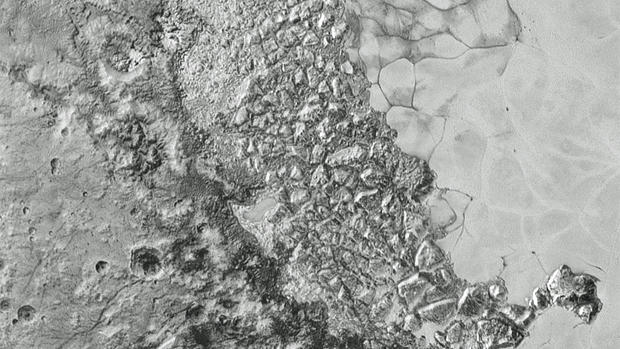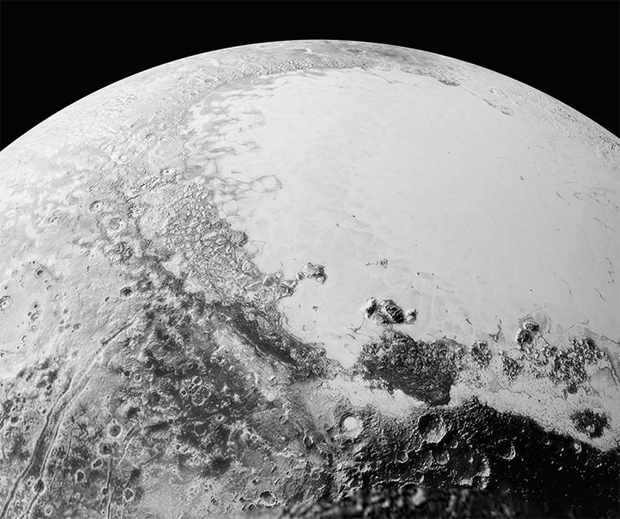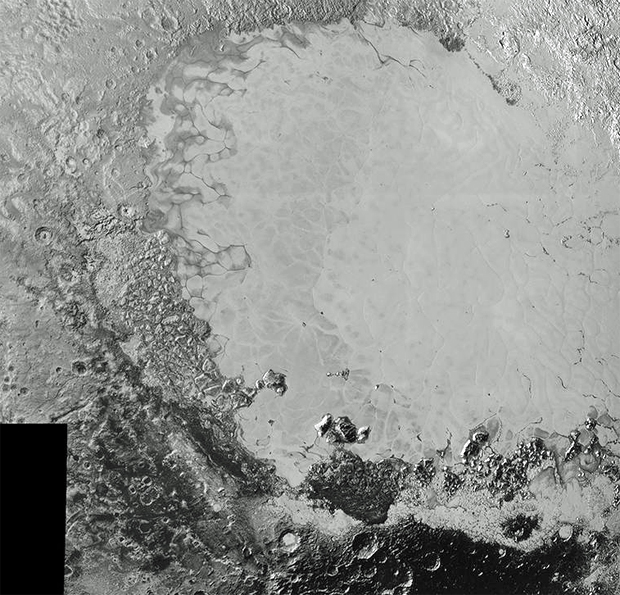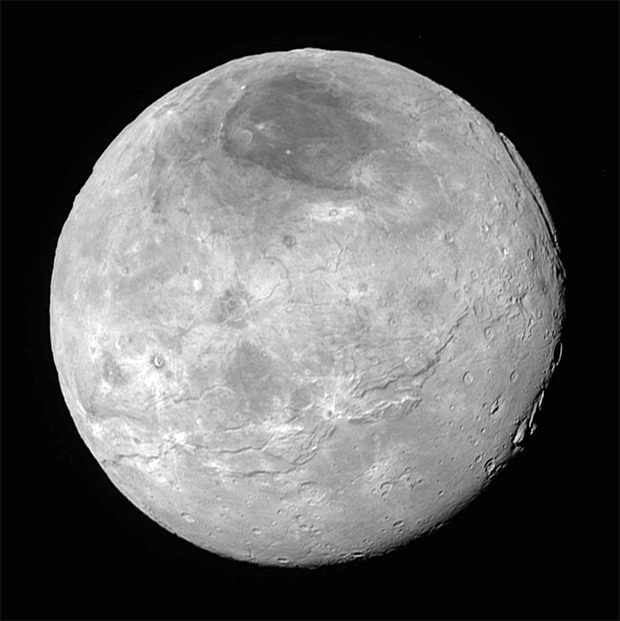New Pluto pictures show stunning complexity
NASA unveiled a fresh batch of Pluto pictures Thursday, revealing stunning vistas that include chaotic ice mountains, possible dunes of some sort, nitrogen ice flows and networks of valleys that defy easy explanation.
The photographs, stored aboard the New Horizon's spacecraft since its historic July 14 flyby and downlinked over the past week, show ancient, heavily-cratered terrain adjacent to younger, much smoother plains and backlit shots of the small world's thin atmosphere showing multiple haze layers.
Most of the photos in the latest release, taken while New Horizons was about 50,000 miles from Pluto, show surface features just a half-mile across.
"Pluto is showing us a diversity of landforms and complexity of processes that rival anything we've seen in the solar system," Alan Stern, the New Horizons principal investigator, said in a NASA release.
"If an artist had painted this Pluto before our flyby, I probably would have called it over the top, but that's what is actually there."
New Horizons stopped beaming back pictures shortly after the flyby to focus on sending home data on energetic particles, the solar wind and space dust. Photo transmission resumed last Saturday.
NASA said new shots of Pluto, it's large moon Charon and smaller moons Nix and Hydra will be posted Friday on the spacecraft's Long Range Reconnaissance Imager -- LORRI -- website.
"The surface of Pluto is every bit as complex as that of Mars," Jeff Moore, leader of the New Horizons Geology, Geophysics and Imaging (GGI) team, said in the release. "The randomly jumbled mountains might be huge blocks of hard water ice floating within a vast, denser, softer deposit of frozen nitrogen within the region informally named Sputnik Planum."
Some of the pictures show what appear to be dunes of some sort, a major surprise given Pluto's thin atmosphere and frigid environment.
"Seeing dunes on Pluto -- if that is what they are -- would be completely wild, because Pluto's atmosphere today is so thin," said William McKinnon, deputy lead of the Geology, Geophysics and Imaging team. "Either Pluto had a thicker atmosphere in the past, or some process we haven't figured out is at work. It's a head-scratcher."





